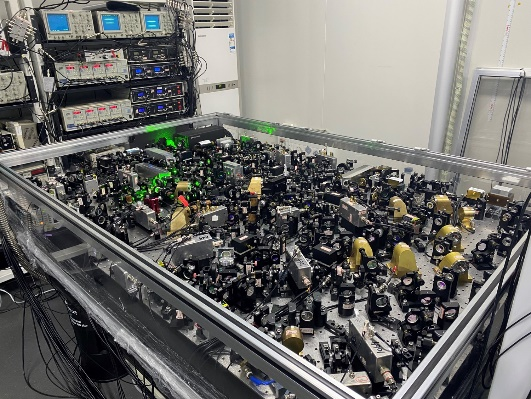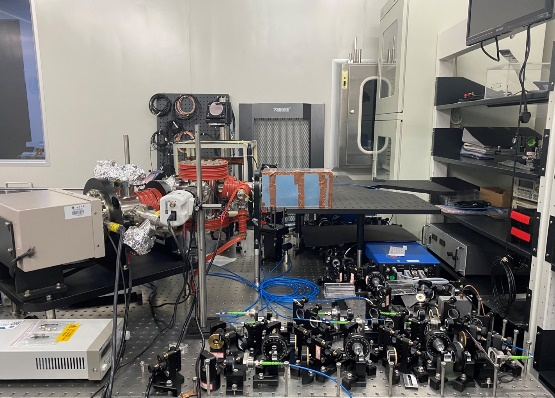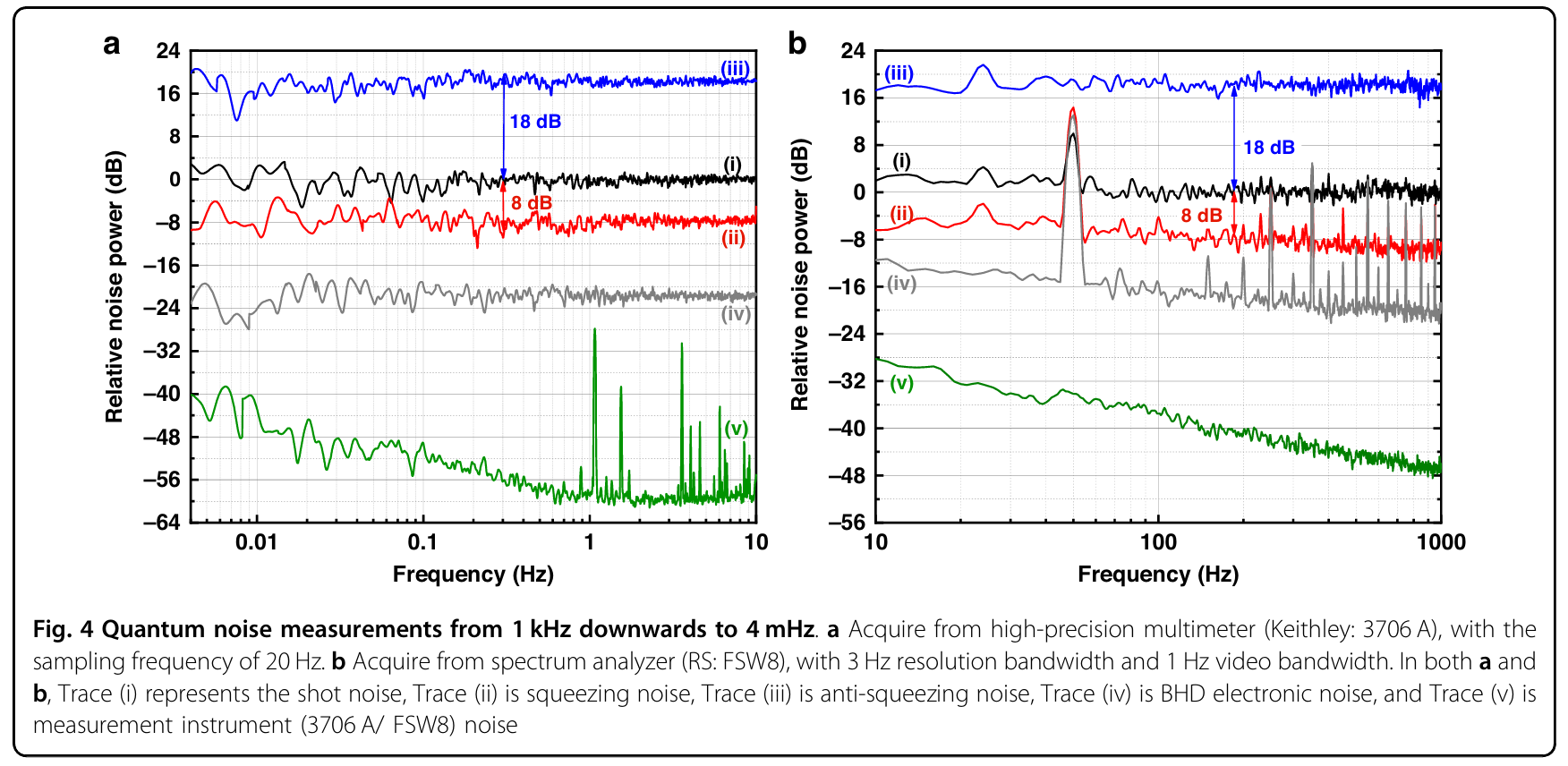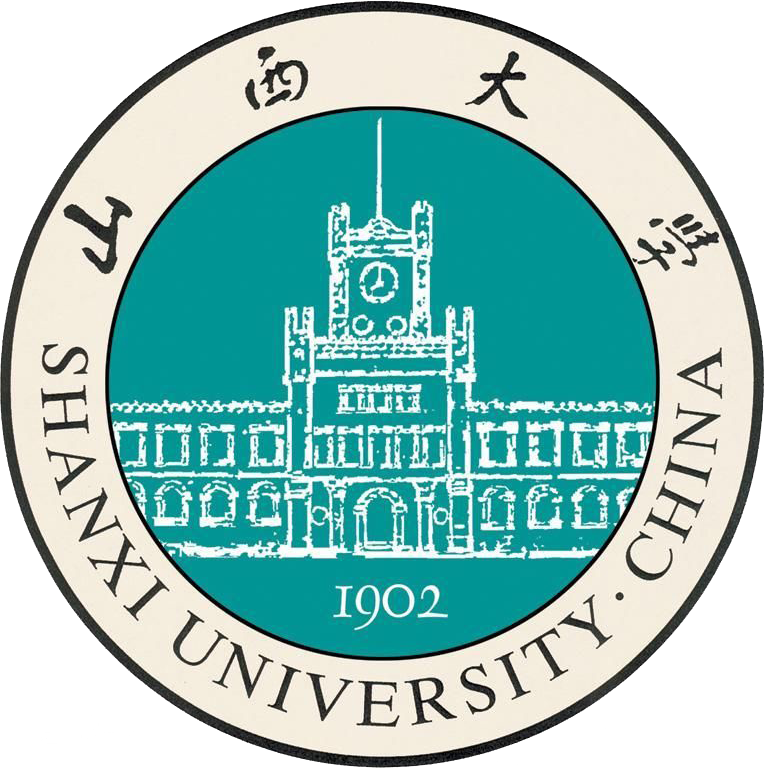


量子传感实验室主要从事激光技术、光量子器件方面的实验与理论研究及量子技术成果转化工作,拥有国内指标最高的连续变量压缩态光场及国际指标最好的纠缠态光场,形成了以高质量非经典光场相关技术为基础的多用户纠缠网路、量子传感与精密测量和量子无噪放大等研究方向,同时开展面向引力波探测的量子噪声控制技术研究。

Generation of squeezed vacuum state in the millihertz frequency band
Authors:Li Gao, Li-ang Zheng, Bo Lu, Shaoping Shi, Long Tian, and Yaohui Zheng.
The detection of gravitational waves has ushered in a new era of observing the universe. Quantum resource advantages offer significant enhancements to the sensitivity of gravitational wave observatories. While squeezed states for ground-based gravitational wave detection have received marked attention, the generation of squeezed states suitable for mid-to-low-frequency detection has remained unexplored. To address the gap in squeezed state optical fields at ultra-low frequencies, we report on the first direct observation of a squeezed vacuum field until Fourier frequency of 4 millihertz with the quantum noise reduction of up to 8 dB, by the employment of a multiple noise suppression scheme. Our work provides quantum resources for future gravitational wave observatories, facilitating the development of quantum precision measurement.

Generation of −10.7 dB unbiased entangled states of light
Authors:Yajun Wang, Wenhui Zhang, Ruixin Li, Long Tian, and Yaohui Zheng
In a continuous variable quantum key distribution (CV-QKD) system, strong Einstein–Podolsky–Rosen entangled states can significantly boost the robustness and distance for secure communication. However, an inevitable bias of two entanglement quadratures may degrade the secret key rate and distance during random quadrature base switching. The bias originates from several interdependent factors in the generation, propagation, and detection of entangled states, which faces a challenge to be completely eliminated. Here, we analyze in detail the origin of the bias effect and report on a scheme of generating unbiased entangled states, whereby a-10:760:1 dB quadrature noise unbiased entanglement is first generated experimentally with two single-mode squeezed states. The unbiased quadrature correlations within the measurement bandwidth are expected to immensely enhance the key rate and secure distance for CV-QKD.

Controllable continuous variable quantum state distributor
Authors:Qingwei Wang, Yajun Wang, Xiaocong Sun, Yuhang Tian, Wei Li,Long Tian, Xudong Yu, Jing Zhang, and Yaohui Zheng*
To scale quantum information processing, quantum state distributors are an indispensable technology in quantum networks. We present a universal scheme of a continuous variable quantum state distributor that performs point-to-multipoint distributions via quantum teleportation with partially disembodied transport. The fidelity of the state at the output nodes can be conveniently manipulated as needed by engineering the correlation noise of the Einstein– Podolsky–Rosen (EPR) beam. For a 1![]() 2 distributor, controllable distributions were demonstrated by manipulating the squeezing factor of EPR entanglement. The fidelities of the two receivers gradually changed from (2/3, 2/3) to (0.95, 0.17) corresponding to the transition from symmetric to asymmetric quantum cloning.
2 distributor, controllable distributions were demonstrated by manipulating the squeezing factor of EPR entanglement. The fidelities of the two receivers gradually changed from (2/3, 2/3) to (0.95, 0.17) corresponding to the transition from symmetric to asymmetric quantum cloning.
Optics Letters 46-8(2021)

Demonstration of Channel Multiplexing Quantum Communication Exploiting Entangled Sideband Modes
Authors:Shaoping Shi, Long Tian , Yajun Wang Yaohui Zheng , Changde Xie, and Kunchi Peng
Channel multiplexing quantum communication based on exploiting continuous-variable entanglement of optical modes offers great potential to enhance channel capacity and save quantum resource. Here, we present a frequency-comb-type control scheme for simultaneously extracting a lot of entangled sideband modes with arbitrary frequency detuning from a squeezed state of light. We experimentally demonstrate fourfold channel multiplexing quantum dense coding communication by exploiting the extracted four pairs of entangled sideband modes. Due to high entanglement and wide frequency separation between each entangled pairs, these quantum channels have large channel capacity and the cross talking effect can be avoided. The achieved channel capacities have surpassed that of all classical and quantum communication under the same bandwidth published so far. The presented scheme can be extended to more channels if more entangled sideband modes are extracted.
Phys. Rev. Lett. 125, 070502 (2020)

